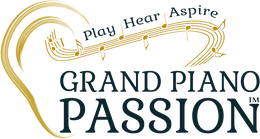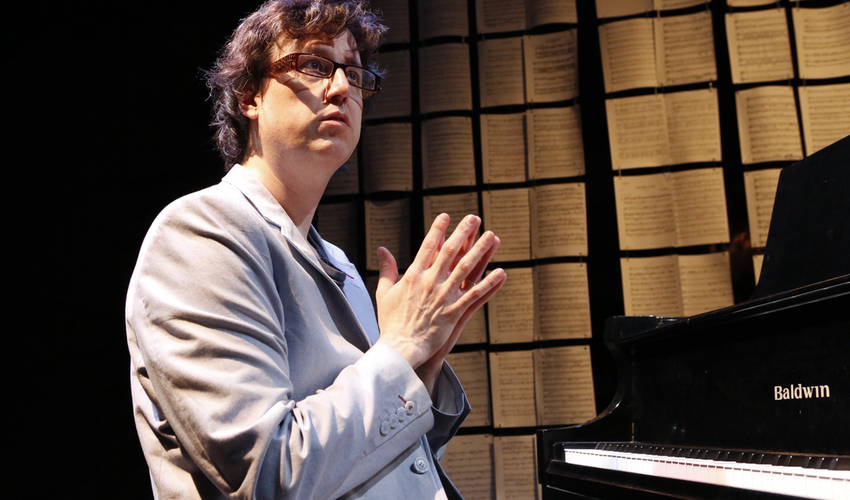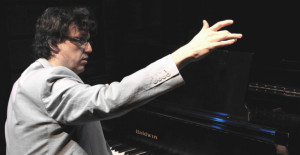Think of a simple song. “Happy Birthday” will do. Imagine the rhythm of the words, the bouncing melody soaring out of you as you make the birthday candles flicker. Hear the happy crowd harmonizing. Feel the music building to a rousing climax as everyone belts out “to you!” at the end.
Did you hear the tune in your head? Of course you did. That’s because “hearing” doesn’t take place only in your ears. Which, frankly, is a huge relief for someone like me, a composer who became profoundly deaf.
At the start of this series, I asked you to practice listening and to begin to see music as a vibrant, almost spiritual thing that exists all around you; a wonderful thing that you can create at will. To think beyond listening with your ears, to listening with your body and with your eyes.
But your body (the tactile sense) and your eyes (the visual sense) are simply triggers. And your ears are simply transmitters. If you want to deeply understand how to listen to music, you need to follow those triggers and transmitters to where the action really happens: your brain. When you make yourself hear “Happy Birthday” in your mind, you are already practicing how to listen… with your memory.
Hearing music in your head is sometimes called musical imagery, musical memories, auditory imagery, or—if you can’t get rid of the tune—an earworm. And practicing how to use it is sometimes called “ear training” or “audiation.”
But to me, it’s auditory memory. Just like remembering your mother’s face or the town you grew up in, you can remember music in big or small forms, from a symphony to a single note. And forget iPods and hard drives. You’ll never run out of storage space—you’ve got about a million gigabytes available in your head, according to Scientific American! Your music memories are more accessible than your phone, always charged up, and you can turn those tunes on and off in a blink.
Using your “mind’s ear” is the one tool that will bring together all the other tools I’ve taught you. It will help your piano performance in multiple ways, including: as a tool to ensure you start in the right tempo, to fill in the blanks if you have a hearing loss, and to “sing” your melodies as you play them so your phrases have natural “breaths.”
It’s just a matter of input, output, and practice, and you’ll soon you’ll be replacing unwanted earworms with useable music memories.
To start, choose what music you need to remember and then “input” it into your mind. If you want to hear exact intervals between notes, try common tunes. For me, a fourth is always “Here Comes the Bride,” an augmented fourth is from West Side Story—“boy-ee, boy-ee, crazy boy-ee”—and an octave is the beginning of “Somewhere Over the Rainbow.” I learned these in my teens, and they’ve stuck with me forever.
If you’re learning a new piece, play it slowly by phrases. Repeat the phrase and sing along in your head. Repeat again, but leave out a note or two and only hear those in your head. Continue until you can repeat all of it mentally without touching the keys.
* * * *
With my hearing loss, I need to memorize every note in my songs that I can’t hear. So I’ll break up the piece into separate elements. The melody I’ll play several octaves lower at first, down where I can still hear slightly. Then I’ll mentally transpose it into the proper octave. Chords have to be built note by note—hearing the third, the seventh, and so on, adding texture until I can hear complex chords mentally.
When people say they are “learning” a new piece of music, essentially they are memorizing it through repetition and slowly adding layers of complexity. You’re doing the same thing here, except doing “playback” in your mind and building up your mental playlist. A playlist not only of complete songs, but also independent parts, harmony, counterpoint—any music element you need.
It may seem daunting at first, but you actually remember much, much more than you think. Just ask yourself questions.
First, try remembering your favorite song. Then a song you loved as a child. Maybe a tune from a TV show. See how many different songs you can play in your mind’s ear.
Then try breaking one of these songs into its elements, like you do with the mental image of a loved one. You see their face and ask—what clothes are they wearing? What’s behind them? What’s the expression? With music, you do the same thing. Play back the song in your head and ask yourself: can I hear the melody? What’s behind it: drums? A band, or a string quartet, or a guitar? After recalling the melody, I usually “listen” for the bass notes and build up the harmonics from there.
You may find it easier to tie each sound to an image: a person playing the piano, or see the music notation, or even an abstract picture if that inspires you. Whatever works to trigger the memory.
Once you’ve input the music you need and practiced listening to your auditory memories, it’s time to combine them with your other listening tools and put them to good use. As you sit at the piano, ready to perform, play back a complex section of music in your mind and lock in your starting tempo. Watch your hands prepare to strike the keys and imagine the music flowing from your fingers. Then dive into the piece, fully using what hearing you have to check balance, emphasis, and expression.
With practice, these listening tools for hearing, feeling, seeing, and remembering music can become such a part of you that you forget you’re using them. You’ll even forget you’re listening at all. Because by then you’ll be… living the music.
Now, go play!





Dear Nancy,
I can across your site yesterday while searching for recordings of Debussy’s Deux Arabesque I. I do enjoy listening to your performance and especially appreciate the tempo at which you play. You play at a speed where one can actually discern the notes and better appreciate the technical elements – as well as the art.
It’s taken me about 2 months to learn the notes and now I hope I’m ready for the music!
I returned to piano lessons about 5 years ago at age 63. I have much more passion than talent. I am enjoying the posts from other students on practice techniques (practice scales for 1 hour) and memorization.
Thanks so much.
Thank you for this article – it is so helpful to me to know that there are different ways of “doing” music